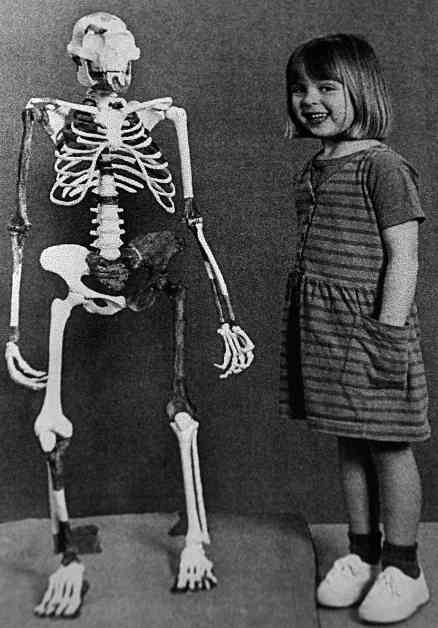In 1974, a groundbreaking discovery was made in Hadar, Ethiopia, that would reshape our understanding of human evolution. U.S. paleoanthropologist Donald Johanson and graduate student Tom Gray unearthed the remains of an early human ancestor, whom they affectionately named “Lucy.” This discovery challenged previous beliefs about the evolution of our lineage.
Lucy belonged to the species Australopithecus afarensis, which lived from 3.8 million years ago to 2.9 million years ago in the region that is now Ethiopia, Kenya, and Tanzania. At 3.2 million years old, Lucy was the oldest and most complete human ancestor found at the time. What set Lucy apart from other primates was her bipedal locomotion and small brain size, challenging the notion that large brains evolved before walking on two legs.
The reconstruction of Lucy’s skeleton in Cleveland, Ohio, offered a glimpse into the past. A photo of 4-year-old Grace Latimer standing next to Lucy highlighted the small stature and brain size of this early human ancestor. Lucy’s adaptations for upright posture and bipedal locomotion, such as an angled femur, S-curved spine, and bowl-shaped pelvis, were crucial for her ability to walk and run on two legs.
Over the past 50 years, Lucy’s discovery has had a profound impact on our understanding of human origins. She continues to be a reference point for researchers studying early human ancestors and the evolution of our own bodies. New discoveries in the field of paleoanthropology have built upon the foundation laid by Lucy, expanding our knowledge of the human fossil record.
As an Associate Professor of Human Evolution and Social Change at Arizona State University, I can attest to Lucy’s enduring legacy in the scientific community. Her significance goes beyond just a single discovery – she represents a pivotal moment in our quest to unravel the mysteries of human evolution. Lucy’s story continues to inspire new research, hypotheses, and methodologies, driving us to explore uncharted territories in our understanding of where we come from and how we became who we are today.






